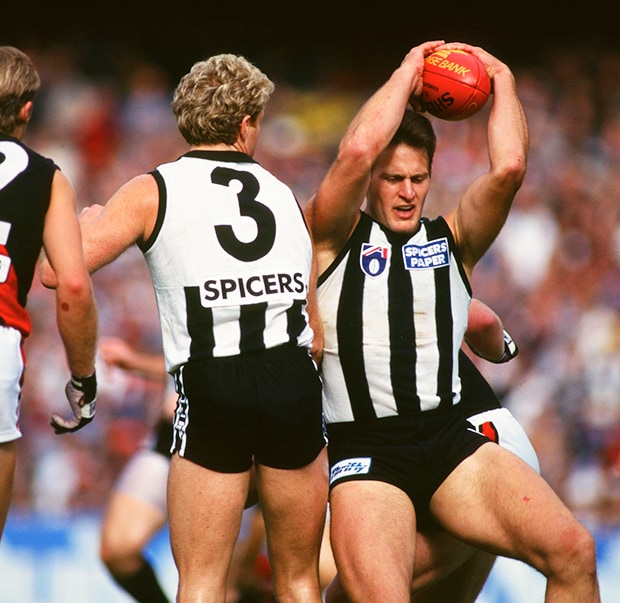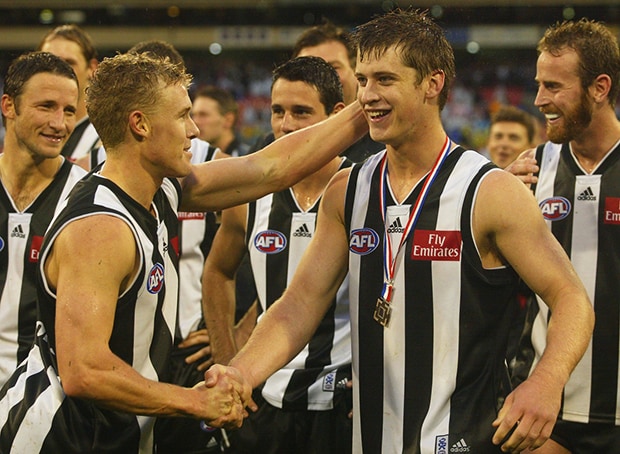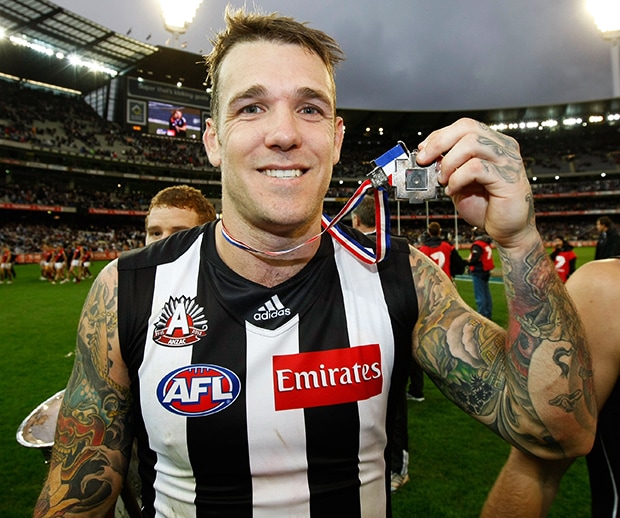Every match that Collingwood plays feels like it's the most important game in the world.
But the truth is that some games matter more than others. And some have impacts that last for decades, even if that significance isn't always apparent at the time.
So here is a trawl through the history books to come up with the most significant games in Magpie history. These aren't just the biggest wins or the most memorable days, but the games that had a significant influence on the club's history.
We've excluded all finals, simply because otherwise the list would almost be completely taken up with premierships and a few painful Grand Final losses. But the home-and-away games covered in this series have had a huge impact on the club – sometimes positively, sometimes negatively. They've led to club turmoil, coaches being sacked, major changes in the game or sometimes set us on the path to a flag.
Whatever the outcome, these games represent major turning points in our club's story. And they're worth recalling.
A turning point for football: Round 4, 1995
When the AFL announced its fixture for 1995, Collingwood and Essendon were slated to play against each other on ANZAC Day, in what the clubs hoped would become a regular, signature event.
There were critics, of course, but most observers thought it a good idea to have a single game played between the same teams every year, and many believed the game would draw a healthy crowd.
But nobody – not even the concept's most ardent supporters – could have foreseen what would happen that day, or in the decades since. The ANZAC Day game between Collingwood and Essendon has grown to become the biggest non-finals day on the football calendar, impacting not only the two clubs involved but also helping to change community attitudes towards ANZAC Day and our returned soldiers in general.
And it all began that gloriously sunny Tuesday back in 1995.
It is often forgotten that Collingwood had played on ANZAC Days before 1995. No footy at all had been played on Australia's most sacred day from the time of the Gallipoli landings until an act of parliament in 1959, which allowed two matches to be played on 25 April 1960 (neither of which involved Collingwood).
In the years to come, the VFL would often (but not always) schedule a couple of games to be played on ANZAC Day, and the Magpies wound up in their fair share of those, most memorably in 1977 when we took on Richmond in Tom Hafey's first game coaching against his old side.
More than 92,000 fans crammed into the MCG that day, and Richmond's Kevin Sheedy, by then nearing the end of his career, never forgot the atmosphere or sense of occasion.
Those memories came back to Sheedy late in 1994. He rang Graeme Allan, then Collingwood's football manager, and the two came up with the idea of the two clubs playing the only game every ANZAC Day, arranged in conjunction with the RSL. This would turn ANZAC Day into a marquee football event, but also one with a wider community focus.
The RSL got behind it and the AFL was supportive, adding the game into its 1995 fixturing, despite the difficulties of scheduling a game on a Tuesday. There was a curiosity attached to the idea of having just one game on the day, with the same two clubs to play each year, but it wasn't a major news story with lots of hype. Collingwood was winless in its first three games too, which didn't help. Still, all involved were hoping it would succeed.
But never in their wildest dreams could they have imagined what eventually transpired. Despite, or perhaps in part because of, the lack of hype, a crowd of 94,823 – the second largest home-and-away attendance in VFL/AFL history – flocked into the MCG. Thousands more missed out or decided to go home when they were still locked out late into the first quarter. It was bedlam: crowds milling around outside and a fearful din inside.
The weather was perfect. And so, fortunately, was the football. It was a breathtaking encounter, full of fast, free-flowing, high-scoring football of the highest quality.
Both teams kicked six goals in the first quarter. Essendon broke away in the second and led by 16 points at the main break. But the Pies turned it on in the second half and at one stage led by four goals in the last quarter, before a Bomber resurgence saw them hit the front with just minutes left.
Sav Rocca kicked his ninth to level the scores, and then Nathan Buckley had the chance to win it when he pounced on a loose ball in the middle of the ground and charged forward. A long roost might just have scored, but he instead chose the unselfish option and looked for Rocca instead. The ball was punched clear and the game finished in a pulsating, breathless draw.

Saverio Rocca kicked nine goals in the ANZAC Day draw of 1995.
And thus a landmark football day was created. There was almost a perfect storm of positivity. The crowd was the big talking point, of course, but so was the quality of the game. And so, importantly, was the way the ANZAC had been honoured before the game.
The 'theatre' of the occasion was immense. The drawn result only added to the magic: it seemed fitting that, on such a day, there was no real winner other than the game and the event itself.
In the years that have followed, the day has become even bigger. The pre-match has become one of the most emotive scenes in Australian sport. It starts when servicemen and women from all conflicts are paraded around the ground, with fans from both sides standing to applaud. The two teams then join forces and run through a single, unified banner. And the silence during the Last Post – complete, utter and reverential – has to be experienced to be believed. It is powerful, and moving. And electric.
On a purely football level the day has thrown up numerous classic contests, no matter where the teams have been on the ladder, as well as wonderful individual performances from stars like Swanny and Pendles, and lesser lights such as Mark McGough.

Tarkyn Lockyer congratulates ANZAC Day Medallist Mark McGough in 2002.
Other clubs quickly became jealous, wanting a piece of the ANZAC pie for themselves. But this had been a Collingwood and Essendon initiative, and the AFL helped protect the clubs' original investment in the idea, even though recent years have seen other clubs edging closer to sharing some of the day.
But it turned out this match was bigger than football. Indeed, the biggest impact of that 1995 game has arguably been on ANZAC Day itself. It was struggling for relevance within the general community in the years leading up to 1995, and many had begun to question its long-term future.
But the Collingwood-Essendon games helped introduce a new generation and audience to ANZAC Day, and the change over the past 20-odd years has been profound. Thousands and thousands flock to the dawn service, and many young people make the pilgrimage to Gallipoli itself – something that would have been almost unthinkable in the early 1990s.
There was another impact, too. In the days after the game, Essendon's Michael Long accused Damian Monkhorst of making a racially-charged abusive remark during the game. An AFL investigation followed, which led to a mediation session and a horribly uncomfortable press conference.
Longer term, it kick-started a process that resulted in the introduction of the AFL's widely lauded racial anti-vilification policy – something that proved to be a significant turning point in race relations within the AFL.
All of these changes – at Collingwood, within the AFL and also in the wider community – flowed from that extraordinary first game on ANZAC Day 1995. When it comes to big games having a big impact, it doesn't get much more profound than that.
Dane Swan shows off his 2012 ANZAC Day Medal.
Turning Points
Written by Glenn McFarlane and Michael Roberts
Turning Points: A game of belief.
Turning Points: The first game.
Turning Points: History's ugly repeat.
Turning Points: Honouring the greater good.



